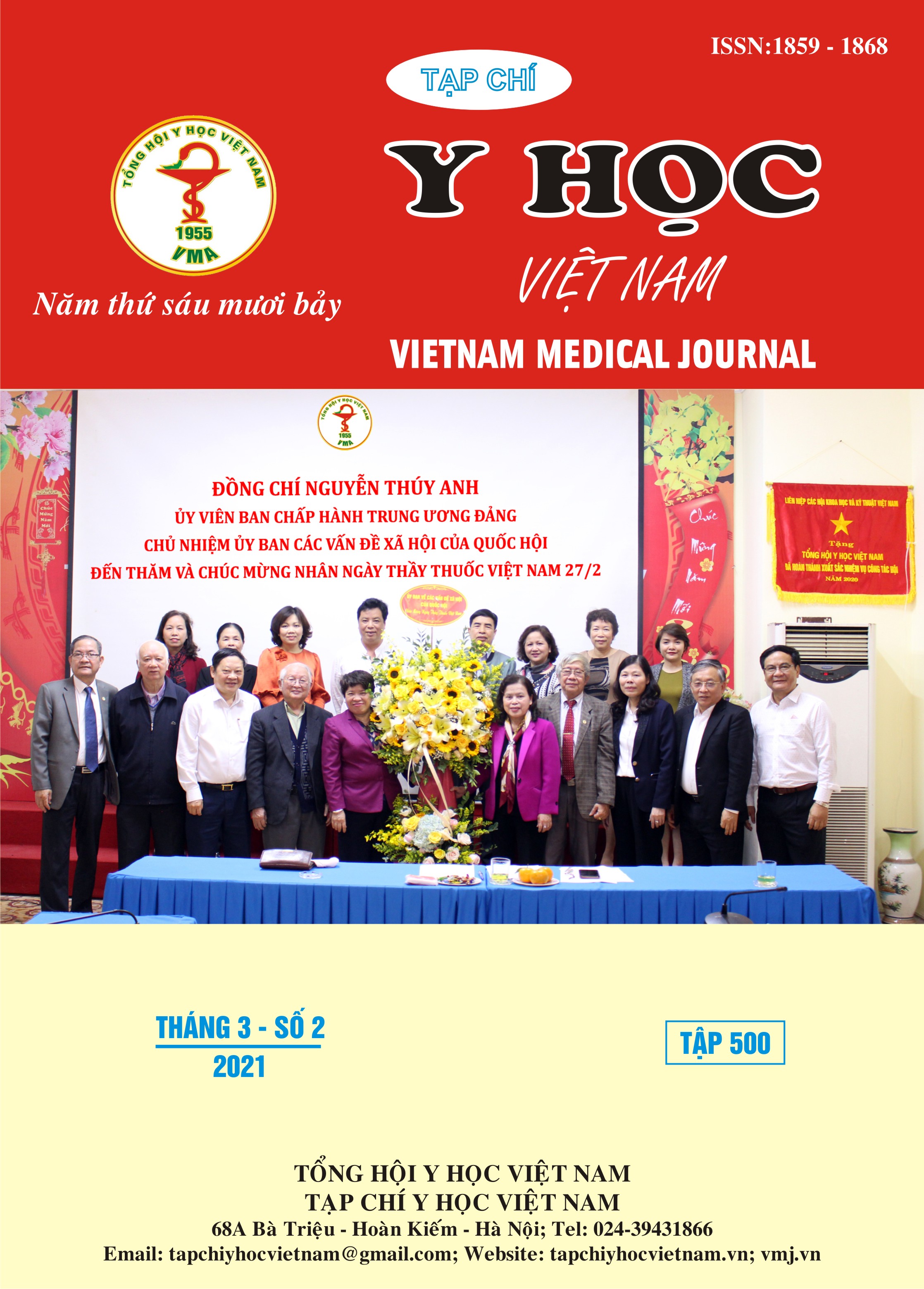THE ROLE OF MAGNETIC RESONANCE IN ANAL FISTULA DIAGNOSIS AT HAI PHONG INTERNATIONAL GENERAL HOSPITAL, 2019 – 2020
Main Article Content
Abstract
Objectives: Anal fistula needs to determine exactly fistula route, fistula location to plan treatment. This study aimed to describe the role of magnetic resonance imaging (MRI) in the diagnosis of anal fistula disease. Materials and Method: Patient was diagnosed with anus fistula, had high field MRI (1.5 Tesla) in accordance with technical standards and had surgery at Hai Phong International General Hospital from July 2019 to November 2020. A cross-sectional and progressive descriptive study was conducted. Data processing by medical statistical software SPSS 20. Results: The study of 79 patients with 86 fistula, was taken MRI and surgery at the hospital, had the results following: common age from 21-60 years old, male/female was 5.1/1. MRI with different pulse sequences had high sensitivity and accuracy in detecting fistula tract, especially fat sat T1 pulse with contrast agents had 100% sensitivity, 97.5% accuracy. MRI had a high value in determining the classification of fistula comparing to the sphincters (according to Parks), assessing the complexity of the fistula, locating the internal hole with high suitability for surgery (over 80% ). In determining the combined abscess with 100% sensitivity, accuracy of 98.7%. Conclusion: MRI had a high consensus with surgical results in fistula detection, assessment of fistula relevance, complexity of fistula, determination of internal hole and combined abscess injury. Especially, the T1C+pulse series had a high value in the diagnosis of fistula and damage coordination, thereby building the fistula map before surgery to bring the highest treatment effect, avoid missing damage and limit recurrence.
Article Details
Keywords
anal fistula, anal abscess, magnetic resonance imaging
References
2. Vương Ngọc Anh, Bùi Văn Lệnh (2016). Đặc điểm hình ảnh và vai trò của cộng hưởng từ trong chẩn đoán rò hậu môn. Tạp chí Điện quang Việt Nam; 23: 19-25.
3. Buchanan G, Halligan S, Williams A, et al. (2002). Effect of MRI on clinical outcome of recurrent fistula-in-ano. Lancet 2002;360(9346): 1661-1662.
4. Chauhan NS, Sood D, Shukla A (2016). Magnetic resonance imaging (MRI) characterization of perianal fistulous disease in a rural based tertiary hospital of North India. Pol J Radiol. 2016;81: 611.
5. De Miguel Criado J, del Salto LG, Rivas PF, et al. (2012). MR imaging evaluation of perianal fistulas: spectrum of imaging features. Radiographics. 2012;32(1): 175-194.
6. Lewis R, Lunniss PJ, Hammond TM (2012). Novel biological strategies in the management of anal fistula. Colorectal Disease 2012;14(12): 1445-1455.
7. Ozkavukcu E, Haliloglu N, Erden A (2011). Frequencies of perianal fistula types using two classification systems. Jpn J Radiol. 2011;29(5): 293-300.
8. Parks A, Gordon P, Hardcastle JD (1976). A classification of fistula-in-ano. Br J Surg. 1976;63(1): 1-12.
9. Singh K, Singh N, Thukral C, Singh KP, Bhalla V (2014). Magnetic resonance imaging (MRI) evaluation of perianal fistulae with surgical correlation. J Clin Diagn Res. 2014;8(6): RC01-RC04.


